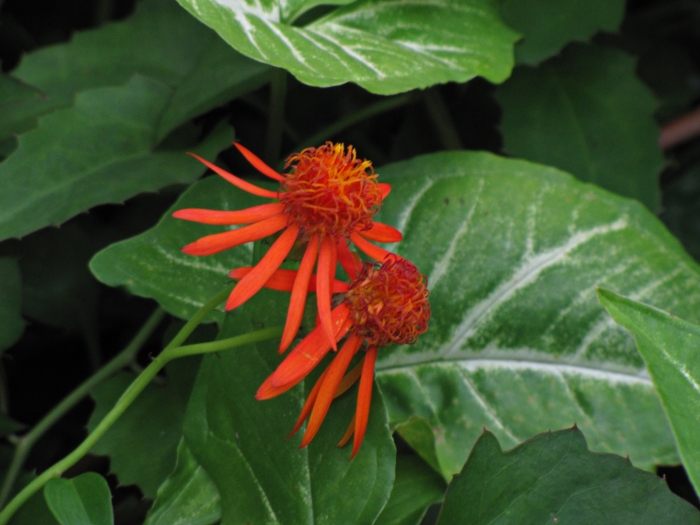Mexican Flamevine
(Pseudogynoxys chenopodioides)
Mexican Flamevine (Pseudogynoxys chenopodioides)
/
/

Vaikoovery
CC BY 3.0












Estimated Native Range
Summary
Mexican flamevine is celebrated for its showy flowers and is commonly used in gardens for trellises, fences, and as a cover for shrubs, providing a burst of color throughout the growing season. It is relatively easy to maintain, requiring full sun and well-drained soil. While it can tolerate a range of soil types, it flourishes in fertile, loamy soils. In regions with frost, the above-ground shoots may die back, but the roots often survive to regrow in the spring. Gardeners in colder climates can grow it as an annual or overwinter it indoors. It is important to be aware that Pseudogynoxys chenopodioides can become invasive outside its native range, so gardeners should check local regulations before planting.CC BY-SA 4.0
Plant Description
- Plant Type: Vine
- Height: 6-12 feet
- Width: 3-6 feet
- Growth Rate: Moderate
- Flower Color: Orange, Red
- Flowering Season: Summer, Fall
- Leaf Retention: Evergreen
Growth Requirements
- Sun: Full Sun
- Water: Medium
- Drainage: Fast
Common Uses
Bee Garden, Bird Garden, Butterfly Garden, Drought Tolerant, Fragrant, Hummingbird Garden, Potted Plant, Showy Flowers
Natural Habitat
native to Mexico and Tropical Americathrives in tropical and subtropical forests, often climbing on other vegetation to reach sunlight
Other Names
Common Names: Bandera Espanola, Margarita Australiana, Margarita Hungara, Margarita Mejicana, Mexican Daisy, Mexican Flame Vine, Orgullo De Mayaguez, Senecio
Scientific Names: , Pseudogynoxys chenopodioides, Senecio chenopodioides, Pseudogynoxys cordifolia, Pseudogynoxys berlandieri, Gynoxys berlandieri, Senecio volubilis, Senecio berlandieri, Senecio jussieui, Gynoxys cordifolia
GBIF Accepted Name: Pseudogynoxys chenopodioides (Kunth) Cabrera